IR
-
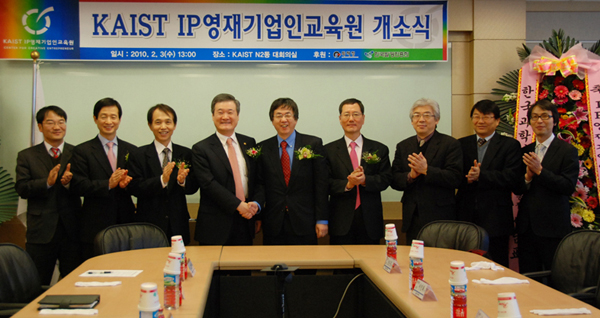 Opening Ceremony Held on February 3, 2010 for Intellectual Property Training Center
KAIST Opened Training Center for Young Entrepreneurs
Commissioner Jung-Sik Koh of Korean Intellectual Property Office (KIPO) and KAIST faculty members including Soon-Hong Jang, Vice President of Operations and Kwang-Hyung Lee, Dean of Academic Affairs Office, joined an opening ceremony held on February 3rd, 2010 to launch a training center for the next generation entrepreneurs who will lead the intellectual property (IP) industry in Korea.
The training center was built in cooperation with KIPO to educate and support young entrepreneurs and prepare them to become tomorrow’s IP business leaders like Bill Gates of Microsoft and Google’s founders, Larry Page and Sergey Brin.
Going through a vigorous selection process, a total of 101 students (51 for intermediate and 50 for advanced level) were chosen last December for an orientation program that will begin February 3rd and continue through February 5th. In addition to the training center at KAIST, KIPO supported to launch another training center at the Pohang University of Science and Technology (POSTECH), which has been up and running since January 27th, 2010.
2010.02.04 View 14671
Opening Ceremony Held on February 3, 2010 for Intellectual Property Training Center
KAIST Opened Training Center for Young Entrepreneurs
Commissioner Jung-Sik Koh of Korean Intellectual Property Office (KIPO) and KAIST faculty members including Soon-Hong Jang, Vice President of Operations and Kwang-Hyung Lee, Dean of Academic Affairs Office, joined an opening ceremony held on February 3rd, 2010 to launch a training center for the next generation entrepreneurs who will lead the intellectual property (IP) industry in Korea.
The training center was built in cooperation with KIPO to educate and support young entrepreneurs and prepare them to become tomorrow’s IP business leaders like Bill Gates of Microsoft and Google’s founders, Larry Page and Sergey Brin.
Going through a vigorous selection process, a total of 101 students (51 for intermediate and 50 for advanced level) were chosen last December for an orientation program that will begin February 3rd and continue through February 5th. In addition to the training center at KAIST, KIPO supported to launch another training center at the Pohang University of Science and Technology (POSTECH), which has been up and running since January 27th, 2010.
2010.02.04 View 14671 -
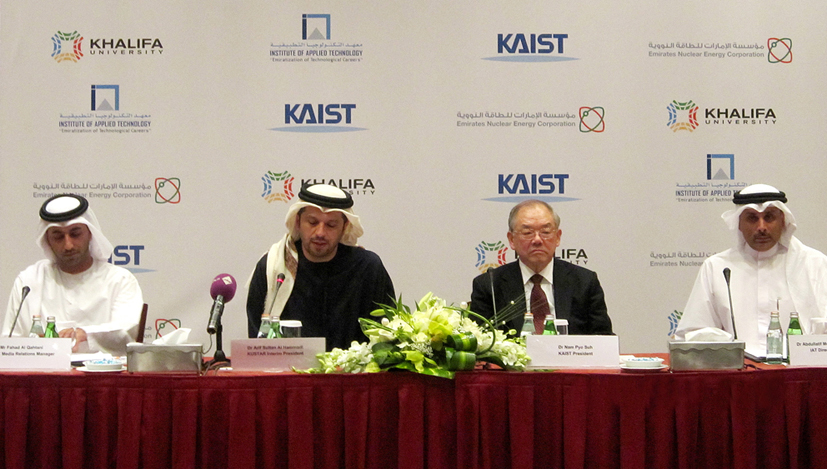 President Nam Pyo Suh of KAIST discussed cooperation with KUSTAR on the training of skilled manpower for research and development (R&D)
Representatives from Korea Advanced Institute of Science and Technology (KAIST), Khalifa University of Science, Technology and Research (KUSTAR), Emirate Nuclear Energy Corporation (ENEC), and the Institute of Applied Technology (IAT) had a meeting on mutual cooperation at the Intercontinental Hotel in Abu Dhabi, the United Arab Emirates (UAE), on January 14, 2009.
Participants of the meeting were President Nam Pyo Suh of KAIST, President Arif Sultan Al Hammadi of KUSTAR, President Mohamed Al Hammadi of ENEC, and Director General Abdullatif Mohamed Al Shamsi of IAT.
A press conference on the training of skilled manpower for research and development (R&D) in the UAE followed afterwards.
At the end of December in 2009, a Korean consortium led by Korea Electric Power Corporation (KEPCO) beat bids from its competitors to construct four nuclear power plants in the UAE. Representing the consortium, Minister Kyung Hwan Choi of Knowledge Economy Ministry signed a comprehensive agreement with KUSTAR and the Institute of Applied Technology (IAT) for the delivery of nuclear power plants.
On his visit, President Suh discussed with KUSTAR the agreement above in greater detail on subjects, where KAIST renders its cooperation, such as research collaboration, university degree program, and training to produce qualified personnel necessary for the development of UAE’s nuclear energy industry.
On research collaboration, sharing its expertise and knowledge accumulated years from the operation of academic and research programs, KAIST agreed to provide cooperation to KUSTAR in developing the latter as a leading science, technology, and research university in ten years through mutual activities such as research collaborations, recruitment and exchange of outstanding researchers and graduate students, expansion of research facilities, and creation of major research policies. Furthermore, in support of nuclear energy program in the UAE, KAIST agreed to develop a joint research program in nuclear engineering and exchange faculty members and students for research collaboration.
On a university degree program, KAIST agreed for mutual cooperation to launch academic programs at KUSTAR, covering BSc, MSc, and PhD degrees to specialize in areas such as mechanical engineering, electrical engineering, nuclear engineering, biomedical engineering, nano technology, science, and information technology. To that end, KAIST will dispatch its faculty to KUSTAR; provide assistance in developing curriculum and teaching materials; and exchange students for research collaboration.
President Arif of KUSTAR mentioned that the university will cooperate with the relevant institutions in Korea, i.e., Korea Development Institute (KDI) and the Korea Institute of Nuclear Safety (KINS), to train skilled workers required for the development of nuclear energy program in the UAE.
He also added, “These cooperative programs will introduce more educational opportunities to our students, and as a result, they can make greater contributions to the development of our nation’s future technologies in various areas. Our students will have a chance to study a broad range of academic subjects through partnership made with the Republic of Korea, and I expect to see improvements in our engineering programs by integrating KAIST’s state-of-the-art academic courses into our system.”
President Arif expressed his hope “to increase cooperation beyond the agreement made between the two countries, like allowing more exchanges and interactions with KAIST for the development of science and technology in Korea and the UAE.”
“Establishing mutual cooperation between KAIST and KUSTAR is a historic event not only for our two universities but also for our two countries. The two universities will make a great contribution to the improvement of the future of humanity by working together to solve the most important, difficult issues faced in the 21st century,” said President Suh.
He also said that “all members of KAIST community will make our utmost efforts to advance the quality of education in two schools and to implement innovative researches through mutual cooperation.”
KUSTAR, a national university in the UAE, was founded on February 13, 2007 by a mandate of the current President Shaikh Khalifa Bin Zayed Al Nahyan to create a higher education institute.
KUSTAR has been building its permanent campus in Abu Dhabi, the capital of UAE since establishment and merged with the campus in Sharjah (formerly known as Etisalat University College with 18 years of history) in 2008. The University offers education and research programs in five disciplines of engineering, logistics and management, health science, homeland security, and applied science.
There are more or less 30 foreign accredited universities set up in the UAE from countries like the US, UK, Australia, France, Ireland, and Canada. Examples of such, among other things, are New York University Abu Dhabi campus and Middlesex University Dubai campus.
Many of the foreign universities in the UAE, however, have colleges of pharmacy, computer science, aviation, management information, fashion design, business management, and medical science including Harvard Medical School Dubai Center, but not many in science and research. Therefore, KAIST’s assistance in KUSTAR’s endeavor to become a leading science and research university in the UAE is timely. The current government of UAE anticipates, with a great interest, to see a leading science and research intuition built in their nation.
Attachment: Current Status of Universities in the UAE as of 2009
Background Information
The United Arab Emirates (UAE) is a federation of seven emirates (Abu Dhabi, Dubai, Sharjah, Ajman, Umm al-Quwain, Ras al-Khaimah, and Fujairah) situated on the Arabian Peninsula, which borders with Oman and Saudi Arabia.
The UAE has the world"s sixth largest oil reserves. As of 2008, its gross domestic product is $2,621,000.5 million and its nominal per capita gross domestic product is $5 5,028, becoming one of the most developed economies in the Middle East. The UAE’s total population as of the said year is 4,760.4 thousand, and its purchasing power per capita is 40th largest in the world. The UAE’s Human Development Index for Asian continent is relatively high, ranking 31st globally.
In 1985, the UAE launched its own airline, Emirates Airline, which has become one of the fastest growing airlines in the world. The Emirates Airline is a sponsor for Arsenal soccer club.
The Republic of Korea established full diplomatic relations with the UAE in June of 1980. On December 27, 2009, a Korean consortium led by Korea Electrical Power Corporation (KEPCO) signed a contract with the UAE to build nuclear power plants.
2010.01.15 View 17367
President Nam Pyo Suh of KAIST discussed cooperation with KUSTAR on the training of skilled manpower for research and development (R&D)
Representatives from Korea Advanced Institute of Science and Technology (KAIST), Khalifa University of Science, Technology and Research (KUSTAR), Emirate Nuclear Energy Corporation (ENEC), and the Institute of Applied Technology (IAT) had a meeting on mutual cooperation at the Intercontinental Hotel in Abu Dhabi, the United Arab Emirates (UAE), on January 14, 2009.
Participants of the meeting were President Nam Pyo Suh of KAIST, President Arif Sultan Al Hammadi of KUSTAR, President Mohamed Al Hammadi of ENEC, and Director General Abdullatif Mohamed Al Shamsi of IAT.
A press conference on the training of skilled manpower for research and development (R&D) in the UAE followed afterwards.
At the end of December in 2009, a Korean consortium led by Korea Electric Power Corporation (KEPCO) beat bids from its competitors to construct four nuclear power plants in the UAE. Representing the consortium, Minister Kyung Hwan Choi of Knowledge Economy Ministry signed a comprehensive agreement with KUSTAR and the Institute of Applied Technology (IAT) for the delivery of nuclear power plants.
On his visit, President Suh discussed with KUSTAR the agreement above in greater detail on subjects, where KAIST renders its cooperation, such as research collaboration, university degree program, and training to produce qualified personnel necessary for the development of UAE’s nuclear energy industry.
On research collaboration, sharing its expertise and knowledge accumulated years from the operation of academic and research programs, KAIST agreed to provide cooperation to KUSTAR in developing the latter as a leading science, technology, and research university in ten years through mutual activities such as research collaborations, recruitment and exchange of outstanding researchers and graduate students, expansion of research facilities, and creation of major research policies. Furthermore, in support of nuclear energy program in the UAE, KAIST agreed to develop a joint research program in nuclear engineering and exchange faculty members and students for research collaboration.
On a university degree program, KAIST agreed for mutual cooperation to launch academic programs at KUSTAR, covering BSc, MSc, and PhD degrees to specialize in areas such as mechanical engineering, electrical engineering, nuclear engineering, biomedical engineering, nano technology, science, and information technology. To that end, KAIST will dispatch its faculty to KUSTAR; provide assistance in developing curriculum and teaching materials; and exchange students for research collaboration.
President Arif of KUSTAR mentioned that the university will cooperate with the relevant institutions in Korea, i.e., Korea Development Institute (KDI) and the Korea Institute of Nuclear Safety (KINS), to train skilled workers required for the development of nuclear energy program in the UAE.
He also added, “These cooperative programs will introduce more educational opportunities to our students, and as a result, they can make greater contributions to the development of our nation’s future technologies in various areas. Our students will have a chance to study a broad range of academic subjects through partnership made with the Republic of Korea, and I expect to see improvements in our engineering programs by integrating KAIST’s state-of-the-art academic courses into our system.”
President Arif expressed his hope “to increase cooperation beyond the agreement made between the two countries, like allowing more exchanges and interactions with KAIST for the development of science and technology in Korea and the UAE.”
“Establishing mutual cooperation between KAIST and KUSTAR is a historic event not only for our two universities but also for our two countries. The two universities will make a great contribution to the improvement of the future of humanity by working together to solve the most important, difficult issues faced in the 21st century,” said President Suh.
He also said that “all members of KAIST community will make our utmost efforts to advance the quality of education in two schools and to implement innovative researches through mutual cooperation.”
KUSTAR, a national university in the UAE, was founded on February 13, 2007 by a mandate of the current President Shaikh Khalifa Bin Zayed Al Nahyan to create a higher education institute.
KUSTAR has been building its permanent campus in Abu Dhabi, the capital of UAE since establishment and merged with the campus in Sharjah (formerly known as Etisalat University College with 18 years of history) in 2008. The University offers education and research programs in five disciplines of engineering, logistics and management, health science, homeland security, and applied science.
There are more or less 30 foreign accredited universities set up in the UAE from countries like the US, UK, Australia, France, Ireland, and Canada. Examples of such, among other things, are New York University Abu Dhabi campus and Middlesex University Dubai campus.
Many of the foreign universities in the UAE, however, have colleges of pharmacy, computer science, aviation, management information, fashion design, business management, and medical science including Harvard Medical School Dubai Center, but not many in science and research. Therefore, KAIST’s assistance in KUSTAR’s endeavor to become a leading science and research university in the UAE is timely. The current government of UAE anticipates, with a great interest, to see a leading science and research intuition built in their nation.
Attachment: Current Status of Universities in the UAE as of 2009
Background Information
The United Arab Emirates (UAE) is a federation of seven emirates (Abu Dhabi, Dubai, Sharjah, Ajman, Umm al-Quwain, Ras al-Khaimah, and Fujairah) situated on the Arabian Peninsula, which borders with Oman and Saudi Arabia.
The UAE has the world"s sixth largest oil reserves. As of 2008, its gross domestic product is $2,621,000.5 million and its nominal per capita gross domestic product is $5 5,028, becoming one of the most developed economies in the Middle East. The UAE’s total population as of the said year is 4,760.4 thousand, and its purchasing power per capita is 40th largest in the world. The UAE’s Human Development Index for Asian continent is relatively high, ranking 31st globally.
In 1985, the UAE launched its own airline, Emirates Airline, which has become one of the fastest growing airlines in the world. The Emirates Airline is a sponsor for Arsenal soccer club.
The Republic of Korea established full diplomatic relations with the UAE in June of 1980. On December 27, 2009, a Korean consortium led by Korea Electrical Power Corporation (KEPCO) signed a contract with the UAE to build nuclear power plants.
2010.01.15 View 17367 -
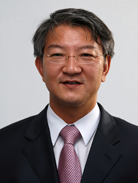 Prof. Sang-Yup Lee Founding Member of Board of Editors of mBop
Prof. Sang-Yup Lee of the Department of Chemical and Biomolecular Engineering at KAIST has been appointed as one of the founding board of editors of the mBio which will be launched next year, the university reported on Friday (Nov. 20).
mBio is the American Society for Microbiology"s first all-online, open access journal which will be launched in next May. According to the mBio website, the journal"s scope "will reflect the enormity of the microbial world, a highly interconnected biosphere where microbes interact with living and non-living matter to produce outcomes that range from symbiosis to pathogenesis, energy acquisition and conversion, climate change, geologic change, food and drug production, and even animal behavioral change."
Prof. Lee, LG Chem Chair Professor, is currently the Dean of the College of Life Science and Bioengineering and director of the Center for Systems and Synthetic Biotechnology. He received his B.S. in Chemical Engineering from Seoul National Univeristy in Korea and his M.S. and Ph.D. in Chemical Engineering from Northwestern University.
As of September 2009, he has published 298 journal papers and has more than 440 patents either registered or applied. Also, he has published 47 books/book chapters, "Systems Biology and Biotechnology of Escherichia Coli" being the latest.
His research interests are systems biology and biotechnology, industrial biotechnology, metabolic engineering, synthetic biology and nanobiotechnology. In particular, he has pioneered systems metabolic engineering, which integrates systems biology with metabolic engineering, for the development of micropoganisms possessing superior properties for industrial applications.
2009.11.20 View 12966
Prof. Sang-Yup Lee Founding Member of Board of Editors of mBop
Prof. Sang-Yup Lee of the Department of Chemical and Biomolecular Engineering at KAIST has been appointed as one of the founding board of editors of the mBio which will be launched next year, the university reported on Friday (Nov. 20).
mBio is the American Society for Microbiology"s first all-online, open access journal which will be launched in next May. According to the mBio website, the journal"s scope "will reflect the enormity of the microbial world, a highly interconnected biosphere where microbes interact with living and non-living matter to produce outcomes that range from symbiosis to pathogenesis, energy acquisition and conversion, climate change, geologic change, food and drug production, and even animal behavioral change."
Prof. Lee, LG Chem Chair Professor, is currently the Dean of the College of Life Science and Bioengineering and director of the Center for Systems and Synthetic Biotechnology. He received his B.S. in Chemical Engineering from Seoul National Univeristy in Korea and his M.S. and Ph.D. in Chemical Engineering from Northwestern University.
As of September 2009, he has published 298 journal papers and has more than 440 patents either registered or applied. Also, he has published 47 books/book chapters, "Systems Biology and Biotechnology of Escherichia Coli" being the latest.
His research interests are systems biology and biotechnology, industrial biotechnology, metabolic engineering, synthetic biology and nanobiotechnology. In particular, he has pioneered systems metabolic engineering, which integrates systems biology with metabolic engineering, for the development of micropoganisms possessing superior properties for industrial applications.
2009.11.20 View 12966 -
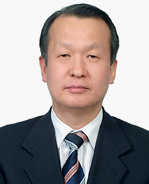 Prof. Yu Wins Sidney Stein International Award
Prof. Jin Yu of the Department of Materials Science and Engineering won the Sidney J. Stein International Award at the plenary session of the International Microelectronics and Packaging Society (IMAPS) held in San Jose, the United States, on Nov. 3.
The Sidney Stein International Award recognizes an individual who is regarded as providing significant international technical and/or leadership contributions to the microelectronics packaging industry, while participating and demonstrating support of IMAPS international activities to enhance the electronics packaging profession.
The International Microelectronics And Packaging Society is the largest society dedicated to the advancement and growth of microelectronics and electronics packaging. It offers chapters around the globe, creating global networks of more than 4,000 members in the United States and an additional 4,000 members throughout Europe and Asia. Prof. Yu currently serves as the chairman of its Asia League Chapter and the Korean Microelectronics and Packaging Society.
2009.11.20 View 13282
Prof. Yu Wins Sidney Stein International Award
Prof. Jin Yu of the Department of Materials Science and Engineering won the Sidney J. Stein International Award at the plenary session of the International Microelectronics and Packaging Society (IMAPS) held in San Jose, the United States, on Nov. 3.
The Sidney Stein International Award recognizes an individual who is regarded as providing significant international technical and/or leadership contributions to the microelectronics packaging industry, while participating and demonstrating support of IMAPS international activities to enhance the electronics packaging profession.
The International Microelectronics And Packaging Society is the largest society dedicated to the advancement and growth of microelectronics and electronics packaging. It offers chapters around the globe, creating global networks of more than 4,000 members in the United States and an additional 4,000 members throughout Europe and Asia. Prof. Yu currently serves as the chairman of its Asia League Chapter and the Korean Microelectronics and Packaging Society.
2009.11.20 View 13282 -
 Prof. Woo's Team Discovers Eco-Friendly Solid-Oxide Fuel Cell System
A KAIST research team led by Prof. Seong-Ihl Woo of the Department of Chemical & Biomolecular Engineering has found a method to use glycerol, a byproduct from the production of biodiesel, as fuel for solid oxide fuel cells (SOFC), university authorities said on Tuesday (Oct. 27).
The research finding shows that glycerol can be an environmentally sustainable fuel when it is used for operating SOFCs with internal reforming, instead of hydrogen and methane. The finding was published in the Oct. 14, 2009 online edition of ChemSusChem, a sister journal of Angewandte Chemie, the world"s leading chemistry journal.
Biodiesel is an attractive alternative energy source because of its low sulfur content and demand is growing worldwide as oil price soars. Bio-derived glycerol will not contribute to the greenhouse effect and has the potential to contribute to reducing global warming.
Currently, glycereol is used as a raw material in the cosmetic, pharmacy, food, and tobacco industries. However, its supply exceeds its demand as the volume of biodiesel production increases. The production of 1 ton of biodiesel produces 0.1 ton of glycerol. Many researchers have investigated various routes for the consumption of surplus glycerol.
The research is expected to contribute to sustainable growth by reducing the emissions of carbon dioxide and reusing generated carbon dioxide for the production of biomass. The new method enables manufacturers to use glycerol as a fuel for operating SOFC.
2009.10.28 View 14032
Prof. Woo's Team Discovers Eco-Friendly Solid-Oxide Fuel Cell System
A KAIST research team led by Prof. Seong-Ihl Woo of the Department of Chemical & Biomolecular Engineering has found a method to use glycerol, a byproduct from the production of biodiesel, as fuel for solid oxide fuel cells (SOFC), university authorities said on Tuesday (Oct. 27).
The research finding shows that glycerol can be an environmentally sustainable fuel when it is used for operating SOFCs with internal reforming, instead of hydrogen and methane. The finding was published in the Oct. 14, 2009 online edition of ChemSusChem, a sister journal of Angewandte Chemie, the world"s leading chemistry journal.
Biodiesel is an attractive alternative energy source because of its low sulfur content and demand is growing worldwide as oil price soars. Bio-derived glycerol will not contribute to the greenhouse effect and has the potential to contribute to reducing global warming.
Currently, glycereol is used as a raw material in the cosmetic, pharmacy, food, and tobacco industries. However, its supply exceeds its demand as the volume of biodiesel production increases. The production of 1 ton of biodiesel produces 0.1 ton of glycerol. Many researchers have investigated various routes for the consumption of surplus glycerol.
The research is expected to contribute to sustainable growth by reducing the emissions of carbon dioxide and reusing generated carbon dioxide for the production of biomass. The new method enables manufacturers to use glycerol as a fuel for operating SOFC.
2009.10.28 View 14032 -
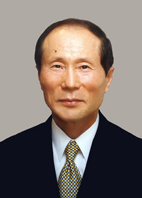 Board Chairman Chung Makes First Visit to Building Named After Him
Moon-Soul Chung, chairman of the KAIST board of trustees, visited the building built with his donation on Monday (Oct. 19) for the first time since he made the deed of gift eight years ago, university authorities said on Monday (Oct. 19).
In 2000, Chung, founder and former CEO of Mirae Corp, manufacturer of semiconductor testing equipment, announced retirement and handed over the presidency of his company to one of his managing directors. One year later in 2001, he donated 30 billion won, then equivalent to $30 million, to KAIST. It was by then the largest amount given by a single donor.
The major part of his donation went to constructing a building for the newly-established Department of Bio and Brain Engineering, and it was named after him. However, Chung did not attend the ground-breaking and dedication ceremonies, saying that he would not enter the building until KAIST achieved a breakthrough technology which can inject a hope to Koreans.
On his first visit to the building, he was briefed on the major research outcomes of the department over the past seven years, which were highlighted by the recent invention of an apparatus for measuring perfusion rate of legs. A KAIST team headed by Prof. Chul-Hee Choi invented a light leakage prevention unit including a light emitting device for radiating light having a certain wavelength onto a living body injected with Indocyanine Green (ICG).
According to Prof. Choi, the invention relates to an apparatus for measuring the perfusion rate of legs. The invention also includes a light leakage prevention housing formed to prevent transmission of external light.
Chung expressing satisfaction with the achievements and encouraged professors, researchers and students working at the Moon-Soul Chung Building.
2009.10.20 View 14704
Board Chairman Chung Makes First Visit to Building Named After Him
Moon-Soul Chung, chairman of the KAIST board of trustees, visited the building built with his donation on Monday (Oct. 19) for the first time since he made the deed of gift eight years ago, university authorities said on Monday (Oct. 19).
In 2000, Chung, founder and former CEO of Mirae Corp, manufacturer of semiconductor testing equipment, announced retirement and handed over the presidency of his company to one of his managing directors. One year later in 2001, he donated 30 billion won, then equivalent to $30 million, to KAIST. It was by then the largest amount given by a single donor.
The major part of his donation went to constructing a building for the newly-established Department of Bio and Brain Engineering, and it was named after him. However, Chung did not attend the ground-breaking and dedication ceremonies, saying that he would not enter the building until KAIST achieved a breakthrough technology which can inject a hope to Koreans.
On his first visit to the building, he was briefed on the major research outcomes of the department over the past seven years, which were highlighted by the recent invention of an apparatus for measuring perfusion rate of legs. A KAIST team headed by Prof. Chul-Hee Choi invented a light leakage prevention unit including a light emitting device for radiating light having a certain wavelength onto a living body injected with Indocyanine Green (ICG).
According to Prof. Choi, the invention relates to an apparatus for measuring the perfusion rate of legs. The invention also includes a light leakage prevention housing formed to prevent transmission of external light.
Chung expressing satisfaction with the achievements and encouraged professors, researchers and students working at the Moon-Soul Chung Building.
2009.10.20 View 14704 -
 KAIST Secures Top Ranking of Korean Universities
KAIST won the No. 1 position for the second year in a row in the daily JoongAng Ilbo"s university rankings for 2009. Seoul National University took back the No. 2 spot, followed in order by POSTECH, Korea and Yonsei universities.
The survey was conducted in the four categories, educational environment/finance, professors" research, general reputation/social advancement and globalization. KAIST scored 293 points out of possible 400 this year, while the second-ranking SNU and third-ranking POSTECH earned 234 and 226 points, respectively.
The daily noted that KAIST particularly excelled in the category of educational environment/finance. It observed that donations to KAIST surged almost 100 times for the past three years since 2006 when President Suh took office.
In specific rankings of universities by academic disciplines, SNU came in first overall. KAIST topped in the science and engineering field, while Korea University ranked first in liberal arts studies.
This year, 88 four-year universities participated in the survey. The daily JoongAng Ilbo started its annual evaluation of Koran universities in 1994 to stimulate productive competition among institutions of higher learning and to provide objective standards for students and their parents to select schools for application.
For more information, news.joins.com/article/391/3789391.html
2009.09.24 View 15743
KAIST Secures Top Ranking of Korean Universities
KAIST won the No. 1 position for the second year in a row in the daily JoongAng Ilbo"s university rankings for 2009. Seoul National University took back the No. 2 spot, followed in order by POSTECH, Korea and Yonsei universities.
The survey was conducted in the four categories, educational environment/finance, professors" research, general reputation/social advancement and globalization. KAIST scored 293 points out of possible 400 this year, while the second-ranking SNU and third-ranking POSTECH earned 234 and 226 points, respectively.
The daily noted that KAIST particularly excelled in the category of educational environment/finance. It observed that donations to KAIST surged almost 100 times for the past three years since 2006 when President Suh took office.
In specific rankings of universities by academic disciplines, SNU came in first overall. KAIST topped in the science and engineering field, while Korea University ranked first in liberal arts studies.
This year, 88 four-year universities participated in the survey. The daily JoongAng Ilbo started its annual evaluation of Koran universities in 1994 to stimulate productive competition among institutions of higher learning and to provide objective standards for students and their parents to select schools for application.
For more information, news.joins.com/article/391/3789391.html
2009.09.24 View 15743 -
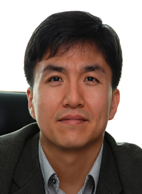 Prof. Cho Elected Editor-in-Chief of Systems Biology
Prof. Kwang-Hyun Cho of Department of Bio and Brain Engineering at KAIST has been recently elected editor-in-chief of the Systems Biology, an international journal published by the London-based Institution of Engineering and Technology (IET), the university authorities said on Wednesday (Sept. 23)
By the year 2012, Cho will oversee the editorial process of the journal covering intra- and inter-cellular dynamics, using systems- and signal-oriented approaches. IET, one of the world"s leading professional societies for the engineering and technology community, has a worldwide membership of more than 150,000.
Prof. Cho"s research interests cover the areas of systems science with bio-medical applications including systems biology and bio-inspired engineering based on molecular systems biology. He is currently an editorial board member of Systems and Synthetic Biology (Springer, Netherlands, from 2006), BMC Systems Biology (BMC, London, U.K., from 2007), Gene Regulation and Systems Biology (Libertas Academica, New Zealand, from 2007), and Bulletin of Mathematical Biology (Springer, New York, from 2008), and an editorial advisory board member of Molecular BioSystems (The Royal Society of Chemistry, U.K.).
2009.09.24 View 16944
Prof. Cho Elected Editor-in-Chief of Systems Biology
Prof. Kwang-Hyun Cho of Department of Bio and Brain Engineering at KAIST has been recently elected editor-in-chief of the Systems Biology, an international journal published by the London-based Institution of Engineering and Technology (IET), the university authorities said on Wednesday (Sept. 23)
By the year 2012, Cho will oversee the editorial process of the journal covering intra- and inter-cellular dynamics, using systems- and signal-oriented approaches. IET, one of the world"s leading professional societies for the engineering and technology community, has a worldwide membership of more than 150,000.
Prof. Cho"s research interests cover the areas of systems science with bio-medical applications including systems biology and bio-inspired engineering based on molecular systems biology. He is currently an editorial board member of Systems and Synthetic Biology (Springer, Netherlands, from 2006), BMC Systems Biology (BMC, London, U.K., from 2007), Gene Regulation and Systems Biology (Libertas Academica, New Zealand, from 2007), and Bulletin of Mathematical Biology (Springer, New York, from 2008), and an editorial advisory board member of Molecular BioSystems (The Royal Society of Chemistry, U.K.).
2009.09.24 View 16944 -
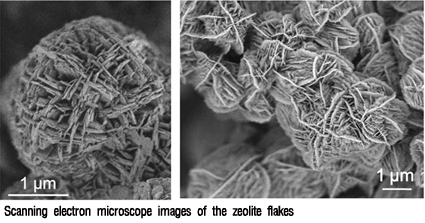 Prof. Ryoo's Team Discovers Breakthrough Method to Create New Zeolite
A group of scientists led by Prof. Ryong Ryoo of the Department of Chemistry, KAIST, has found a method to direct the growth of zeolite, a crystalline substance that is frequently used as catalyst in the chemical and petrochemical industries, the university authorities said on Thursday (Sept. 10).
Ryoo"s research team successfully created ultrathin nano-sheets, only two nano-meters thick, that are efficiently used as long-life catalysts for hydrocarbon cracking and other petrochemical applications. The breakthrough finding, which is credited with taking acidic zeolite catalysts to the limit in terms of thickness, was published in the latest edition of the peer-review journal, "Nature."
A team from the Polytechnic Univeristy of Valencia, Spain, also contributed to the research.
Zeolites are already widely used in the petrochemical industry, but making the catalysts very thin means that reactant molecules can easily diffuse into the zeolite structure and product molecules can get out quickly. This improves the efficiency of the catalyst and reduces unwanted side reactions that can produce polymeric hydrocarbon "coke" that clogs the zeolite pores and eventually kills the catalytic activity, Prof. Yoo said.
To make the thin sheets, Ryoo and his team used a surfactant as a template to direct the growth of the zeolite structure. The surfactant molecule has a polar "head" group - with two quaternary ammonium groups around which the aluminosilicate zeolite crystal grows - and a long hydrocarbon "tail," which prevents the sheets from aggregating together into larger, three dimensional crystals. When the surfactant is removed, these flakes pile up randomly with gaps in between which further aids diffusion to the catalyst sites.
"Zeolite could be used as a catalyst to convert heavy oil into gasoline. Our new zeolite could provide even more possibilities, such as being used as catalysts for transforming methanol into gasline," Ryoo said.
Prof. Ryoo, a Distinguished Professor of KAIST, has won a variety of academic awards, which included the Top Scientist Award given by the Korean government in 2005 and the 2001 KOSEF Science and Technology Award for his work on the synthesis and crystal structure of mezzoporous silica.
Ryoo obtained his bachelor"s degree from Seoul National University in 1977, master"s from KAIST in 1979, and doctorate from Stanford University in 1985.
In 2006, Ryoo and his research team announced the discovery of a form of zeolite that can catalyze petrochemical reactions much more effectively than previous zeolites. Because of the potential of this to streamline the gasoline refining process, it was greeted as a "magical substance" by the South Korean press.
2009.09.11 View 12997
Prof. Ryoo's Team Discovers Breakthrough Method to Create New Zeolite
A group of scientists led by Prof. Ryong Ryoo of the Department of Chemistry, KAIST, has found a method to direct the growth of zeolite, a crystalline substance that is frequently used as catalyst in the chemical and petrochemical industries, the university authorities said on Thursday (Sept. 10).
Ryoo"s research team successfully created ultrathin nano-sheets, only two nano-meters thick, that are efficiently used as long-life catalysts for hydrocarbon cracking and other petrochemical applications. The breakthrough finding, which is credited with taking acidic zeolite catalysts to the limit in terms of thickness, was published in the latest edition of the peer-review journal, "Nature."
A team from the Polytechnic Univeristy of Valencia, Spain, also contributed to the research.
Zeolites are already widely used in the petrochemical industry, but making the catalysts very thin means that reactant molecules can easily diffuse into the zeolite structure and product molecules can get out quickly. This improves the efficiency of the catalyst and reduces unwanted side reactions that can produce polymeric hydrocarbon "coke" that clogs the zeolite pores and eventually kills the catalytic activity, Prof. Yoo said.
To make the thin sheets, Ryoo and his team used a surfactant as a template to direct the growth of the zeolite structure. The surfactant molecule has a polar "head" group - with two quaternary ammonium groups around which the aluminosilicate zeolite crystal grows - and a long hydrocarbon "tail," which prevents the sheets from aggregating together into larger, three dimensional crystals. When the surfactant is removed, these flakes pile up randomly with gaps in between which further aids diffusion to the catalyst sites.
"Zeolite could be used as a catalyst to convert heavy oil into gasoline. Our new zeolite could provide even more possibilities, such as being used as catalysts for transforming methanol into gasline," Ryoo said.
Prof. Ryoo, a Distinguished Professor of KAIST, has won a variety of academic awards, which included the Top Scientist Award given by the Korean government in 2005 and the 2001 KOSEF Science and Technology Award for his work on the synthesis and crystal structure of mezzoporous silica.
Ryoo obtained his bachelor"s degree from Seoul National University in 1977, master"s from KAIST in 1979, and doctorate from Stanford University in 1985.
In 2006, Ryoo and his research team announced the discovery of a form of zeolite that can catalyze petrochemical reactions much more effectively than previous zeolites. Because of the potential of this to streamline the gasoline refining process, it was greeted as a "magical substance" by the South Korean press.
2009.09.11 View 12997 -
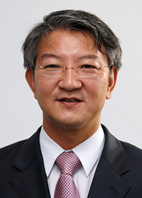 KAIST Professor Sang-Yup Lee Chair of International Metabolic Engineering Conference Due Next Year
KAIST distinguished professor Sang-Yup Lee was named to chair the 17th Metabolic Engineering Conference which will convene on Jeju Island, Korea, next year, under the theme of "Metabolic Engineering for Green Growth." It was decided at the 16th Biochemical Engineering Conference held in Burlington, Vermont, on July 5-9.
Metabolic Engineering Conference in 2010 will not only involve presentations and discussions about metabolic engineering, but will inaugurate the “World Council on Industrial Biotechnology,” which will bring together global corporations and the world’s experts in industrial biochemical engineering, according to sources at KAIST.
A KAIST official commented, “The fact that the Metabolic Engineering Conference is to be held here [in Korea] proves that Korea is being acknowledged as a key player in this field.”
As the world faces the depletion of fossil fuels and environmental pollution, nations are showing increasing interest in industrial biochemical alternatives, such as microscopic organisms or new chemicals, to solve their problems. In addition, efficient production of biochemical materials and bio-fuels using microbes is deemed vital for the future.
“The Korean government has become a model to other countries thanks to its leadership in carrying out the ‘Green Growth’ policy,” Professor Sang-Yup Lee said. He stated that KAIST is recognized for its research in advanced biochemical material and fuel production methods.
“Green Growth,” a concept first developed by ESCAP, the UN agency working for social and economic cooperation in Asia and the Pacific, aims to achieve sustainable economic growth without destroying the environment.
Ref. Department of Biochemical Engineering, Metabolic and BioMolecular Engineering Lab, KAIST
2009.07.17 View 14078
KAIST Professor Sang-Yup Lee Chair of International Metabolic Engineering Conference Due Next Year
KAIST distinguished professor Sang-Yup Lee was named to chair the 17th Metabolic Engineering Conference which will convene on Jeju Island, Korea, next year, under the theme of "Metabolic Engineering for Green Growth." It was decided at the 16th Biochemical Engineering Conference held in Burlington, Vermont, on July 5-9.
Metabolic Engineering Conference in 2010 will not only involve presentations and discussions about metabolic engineering, but will inaugurate the “World Council on Industrial Biotechnology,” which will bring together global corporations and the world’s experts in industrial biochemical engineering, according to sources at KAIST.
A KAIST official commented, “The fact that the Metabolic Engineering Conference is to be held here [in Korea] proves that Korea is being acknowledged as a key player in this field.”
As the world faces the depletion of fossil fuels and environmental pollution, nations are showing increasing interest in industrial biochemical alternatives, such as microscopic organisms or new chemicals, to solve their problems. In addition, efficient production of biochemical materials and bio-fuels using microbes is deemed vital for the future.
“The Korean government has become a model to other countries thanks to its leadership in carrying out the ‘Green Growth’ policy,” Professor Sang-Yup Lee said. He stated that KAIST is recognized for its research in advanced biochemical material and fuel production methods.
“Green Growth,” a concept first developed by ESCAP, the UN agency working for social and economic cooperation in Asia and the Pacific, aims to achieve sustainable economic growth without destroying the environment.
Ref. Department of Biochemical Engineering, Metabolic and BioMolecular Engineering Lab, KAIST
2009.07.17 View 14078 -
 KAIST Professor Whang Turns VLDB Journal Into One of the Best in Its Field
Kyu-Young Whang, a Distinguished Professor at KAIST’s Computer Science Department, has developed The VLDB Journal into one of the world’s best journals on database technology.
Professor Whang, Editor-in-Chief of The VLDB Journal, is credited for the journal’s remarkable success evidenced by the rise of the publication’s Science Citation Index (SCI) impact factor from 3.818 to 6.8 in the period of one year. This placed the VLDB in the first place amongst 99 information systems journals and 44 hardware and architecture-related journals registered with the SCI. With only the exception of the Survey Journal, this makes The VLDB Journal the best in computer science.
The VLDB Journal is a quarterly journal published on behalf of the VLDB Endowment. The journal, launched in 1992, is dedicated to the publication of scholarly contributions to the advancement of information system architectures, the impact of technological advancements on information systems, and the development of novel database applications.
The VLDB Journal’s closest competitors in database technology, IEEE Transactions on Knowledge and Data Engineering and ACM Transactions on Database Systems, received an impact factor of 2.236 and 1.613 respectively. Comparatively, Professor Whang’s journal retains an impact factor nearly 3 to 4 times greater.
During Professor Whang’s six-year term as Editor-in-Chief, he has actively pursued the use of innovative ideas, strengthened the board of editors, standardized the length of review time, and made the journal much more accessible through the Internet. Furthermore, he drastically reduced publication time and sought a policy that focused more on the journal’s readers, which led to The VLDB Journal’s SCI impact factor rising from 1.149 (2002) to 6.8 (2008).
As one of The VLDB Journal’s founding members, Professor Whang has worked for the advancement of his journal tirelessly for 19 years with many accomplishments in database technology, including physical database design, determining the quality of a database, and the creation of a database management system. As a result, Professor Whang became the first IEEE fellow concerning domestic computer science. He is also a trustee of The VLDB Endowment, a fellow of the Korean Academy of Science and Technology, and of course, a Distinguished Professor at KAIST.
2009.07.16 View 15073
KAIST Professor Whang Turns VLDB Journal Into One of the Best in Its Field
Kyu-Young Whang, a Distinguished Professor at KAIST’s Computer Science Department, has developed The VLDB Journal into one of the world’s best journals on database technology.
Professor Whang, Editor-in-Chief of The VLDB Journal, is credited for the journal’s remarkable success evidenced by the rise of the publication’s Science Citation Index (SCI) impact factor from 3.818 to 6.8 in the period of one year. This placed the VLDB in the first place amongst 99 information systems journals and 44 hardware and architecture-related journals registered with the SCI. With only the exception of the Survey Journal, this makes The VLDB Journal the best in computer science.
The VLDB Journal is a quarterly journal published on behalf of the VLDB Endowment. The journal, launched in 1992, is dedicated to the publication of scholarly contributions to the advancement of information system architectures, the impact of technological advancements on information systems, and the development of novel database applications.
The VLDB Journal’s closest competitors in database technology, IEEE Transactions on Knowledge and Data Engineering and ACM Transactions on Database Systems, received an impact factor of 2.236 and 1.613 respectively. Comparatively, Professor Whang’s journal retains an impact factor nearly 3 to 4 times greater.
During Professor Whang’s six-year term as Editor-in-Chief, he has actively pursued the use of innovative ideas, strengthened the board of editors, standardized the length of review time, and made the journal much more accessible through the Internet. Furthermore, he drastically reduced publication time and sought a policy that focused more on the journal’s readers, which led to The VLDB Journal’s SCI impact factor rising from 1.149 (2002) to 6.8 (2008).
As one of The VLDB Journal’s founding members, Professor Whang has worked for the advancement of his journal tirelessly for 19 years with many accomplishments in database technology, including physical database design, determining the quality of a database, and the creation of a database management system. As a result, Professor Whang became the first IEEE fellow concerning domestic computer science. He is also a trustee of The VLDB Endowment, a fellow of the Korean Academy of Science and Technology, and of course, a Distinguished Professor at KAIST.
2009.07.16 View 15073 -
 Prof. Park to Receive HP's Annual Innovation Research Award
Prof. In-Kyu Park of the Department of Mechanical Engineering, KAIST, has been will receive an award from Hewlett-Packard"s second annual Labs Innovation Research Program, university authorities said on Wednesday (July 8).
Prof. Park was chosen as the winner of the research award for his paper entitled "Eco-friendly nanomanufacturing for intelligent environment sensing applications."
Sixty projects from 46 universities in 12 countries were selected as the recipients of the awards from HP Labs, the company"s central research arm. The program is designed to create opportunities for colleges, universities and research institutes to conduct collaborative research with HP.
HP Labs Innovation Research Awards provide project funding of up to $100,000 for one year to each of the chosen academic institutions, which is renewable for up to three years based on research progress and HP business requirements.
Prof. Park has conducted joint researches on nanoimprinting, nanosensors, and nanoelectronics with HP"s Information and Quantum Systems Lab since 2005. Starting from the later half of 2009, he is to receive research grants under the industry-academia cooperation program of the world"s information technology giant firm.
2009.07.09 View 15047
Prof. Park to Receive HP's Annual Innovation Research Award
Prof. In-Kyu Park of the Department of Mechanical Engineering, KAIST, has been will receive an award from Hewlett-Packard"s second annual Labs Innovation Research Program, university authorities said on Wednesday (July 8).
Prof. Park was chosen as the winner of the research award for his paper entitled "Eco-friendly nanomanufacturing for intelligent environment sensing applications."
Sixty projects from 46 universities in 12 countries were selected as the recipients of the awards from HP Labs, the company"s central research arm. The program is designed to create opportunities for colleges, universities and research institutes to conduct collaborative research with HP.
HP Labs Innovation Research Awards provide project funding of up to $100,000 for one year to each of the chosen academic institutions, which is renewable for up to three years based on research progress and HP business requirements.
Prof. Park has conducted joint researches on nanoimprinting, nanosensors, and nanoelectronics with HP"s Information and Quantum Systems Lab since 2005. Starting from the later half of 2009, he is to receive research grants under the industry-academia cooperation program of the world"s information technology giant firm.
2009.07.09 View 15047